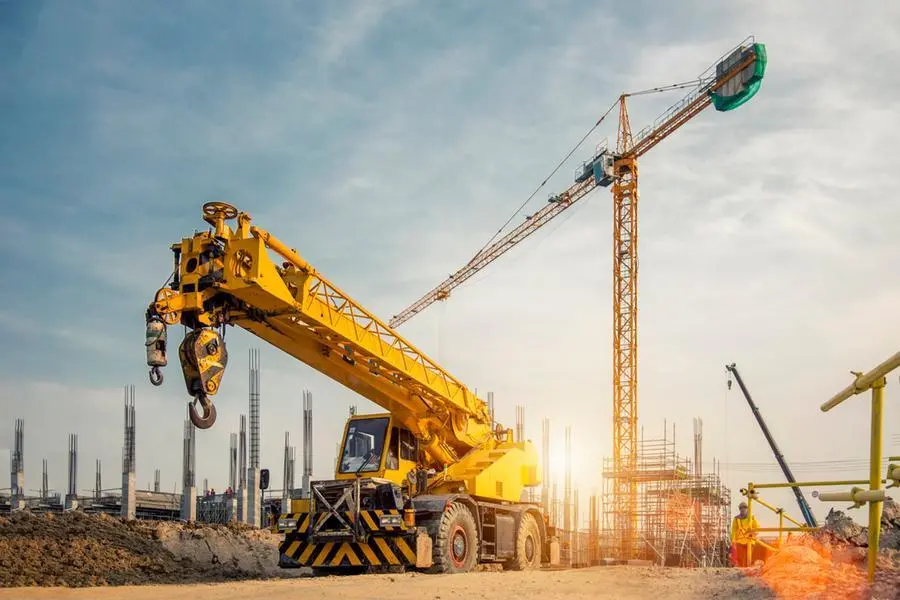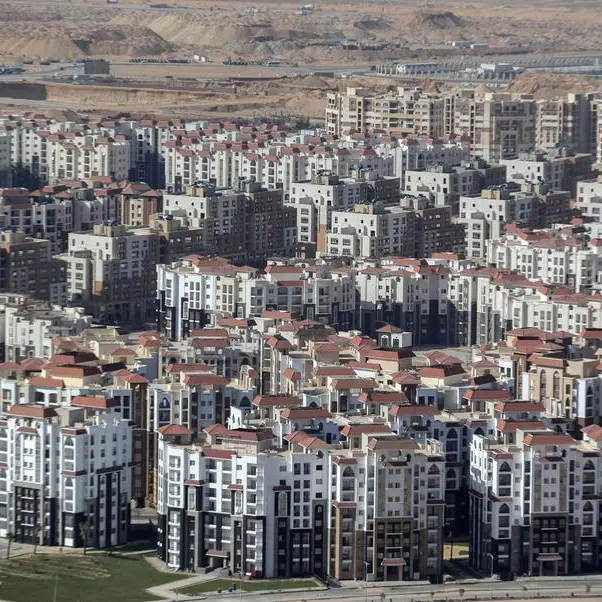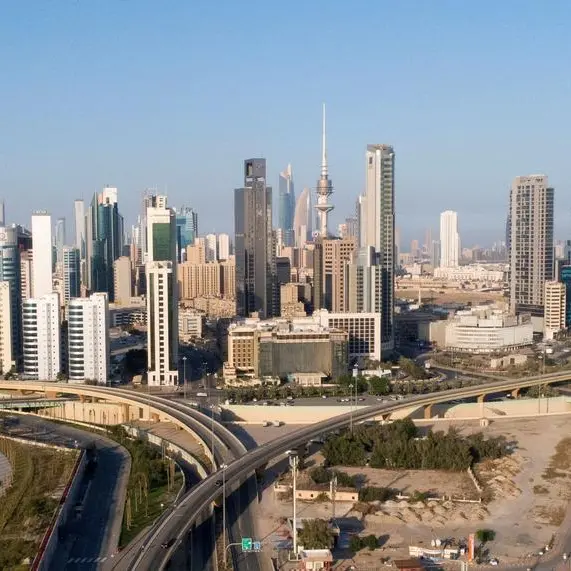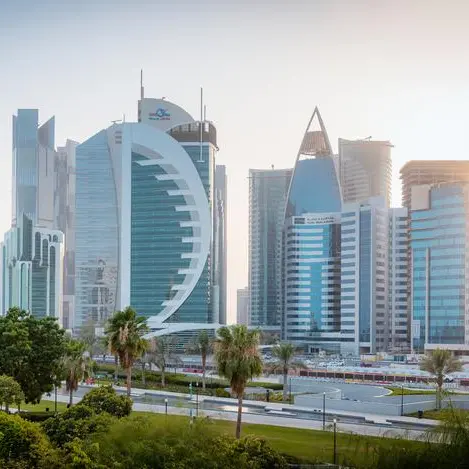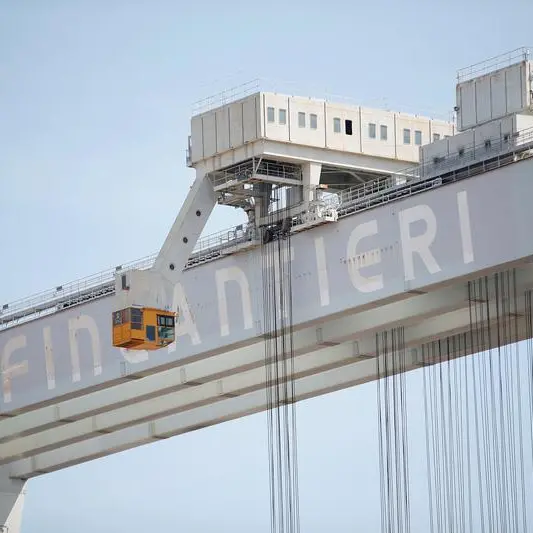PHOTO
Mobile Crane on a road and tower crane in construction site. Getty Images Image used for illustrative purpose.
Many major construction firms are now publishing both medium-term and long-term targets to reduce their contribution to greenhouse gas emissions, outlining their commitment to support international efforts to mitigate global climate change.
Though the carbon dioxide emissions from off-road construction vehicles account for only around 1.1% of global emissions, the International Energy Agency (IEA) estimates that the construction industry is responsible for approximately 20% of global emissions when the production of building materials (cement, steel, glass, etc) and infrastructure construction projects are included.
The IEA said with increasing scrutiny of the environmental impact of current building practices, the electrification of mobile construction machinery offers construction companies a relatively near-term opportunity to demonstrate their environmental credentials.
Scope 1 emissions refer to direct greenhouse gas emissions from sources controlled by an organization, for example, from the combustion of diesel fuel in company machines.
Investment in zero-emission construction machines, replacing fossil fuel-powered excavators, loaders, and cranes, will be critical to every construction company’s effort to reduce their Scope 1 emissions, it added.
Leading research group IDTechEx in its report, “Electric Vehicles in Construction 2022-2042”, forecasts the electric construction vehicle market to grow rapidly over the next decade, with a CAGR of 37.6%.
Whilst regulatory pressure in on-road vehicle markets has driven improved fuel efficiency, reduced tailpipe emissions, and is driving a market shift towards electric vehicles, emission legislation for Non-Road Mobile Machinery (NRMM) is targeted at the emission of local air pollutants (such as nitrogen oxides, carbon monoxide, and particulates, but does not regulate greenhouse gas emissions (e.g. carbon dioxide).
Introducing fuel consumption and carbon dioxide (CO2) emission standards such as those for the heavy-duty on-road market would be beneficial to the uptake of zero-emission off-road machinery, however, given the considerable time it would take to update the NRMM emission standards, other mechanisms for incentivizing zero-emission machines will need to be found, stated IDTechEx.
At the highest level, pressure to reduce the greenhouse gas emissions from the construction industry is being driven by national environmental policies. The 2015 UNFCC Paris Agreement has seen the vast majority of countries commit to reducing the emission of CO2, with many having set timelines for net zero emission (Germany 2045; UK, US, and Japan 2050; China 2060).
To encourage the uptake of zero-emission construction machines, governments must support the transition away from fossil fuels with economic incentives, including offering subsidies and tax breaks on electric machine purchases, said the research group.
There will also be support for greener construction at a municipal level. Cities around the world are recognizing the impact of poor air quality on the health of their citizens and are making efforts to reduce air pollutant emissions.
Implementing low emission zones in cities, where a daily fee must be paid to operate diesel machines within the zone, could greatly improve the financial viability of electric construction machines, it stated.
Oslo, the capital city of Norway, is notably promoting green construction. In 2019 they established the first zero-emission urban construction site, and from 2030 onward, they will, along with six other major cities in Norway, ban non-zero emission machines from construction sites.
Norway’s strong policy has spurred the development of many heavy-duty electric construction vehicle prototypes in Europe.
According to an expert, electric machines are considerably quieter than combustion engines.
Bobcat, for instance, suggests that the noise level of their E10e mini excavator is around half that of a similar diesel machine with an LpA (operator noise) of 74 dB(A), this is about the volume of a conversation. The construction industry is a high-risk industry for noise-related ill health, including hearing loss, he stated.
Hearing protection is required on many sites. However, this can hinder communication, affecting both site safety and productivity.
Noise pollution is also an inconvenience for the area around building sites, and noise restrictions in urban and suburban environments limit the operational hours in which machines can operate. Zero-emission construction machines could both vastly improve the working environment and offer the potential for extended working hours, he added.
IDTechEx pointed out that though construction vehicles lack the regulatory levers around exhaust greenhouse gas emissions to force manufacturers to move toward zero-emission machines, broader commitments to climate change are already spurring countries and companies to act.
Health and safety concerns like the impact of diesel particulate exhaust emissions and loud noise on construction workers health could be equally important drivers for machine electrification, it added.
Copyright 2022 Al Hilal Publishing and Marketing Group Provided by SyndiGate Media Inc. (Syndigate.info).
